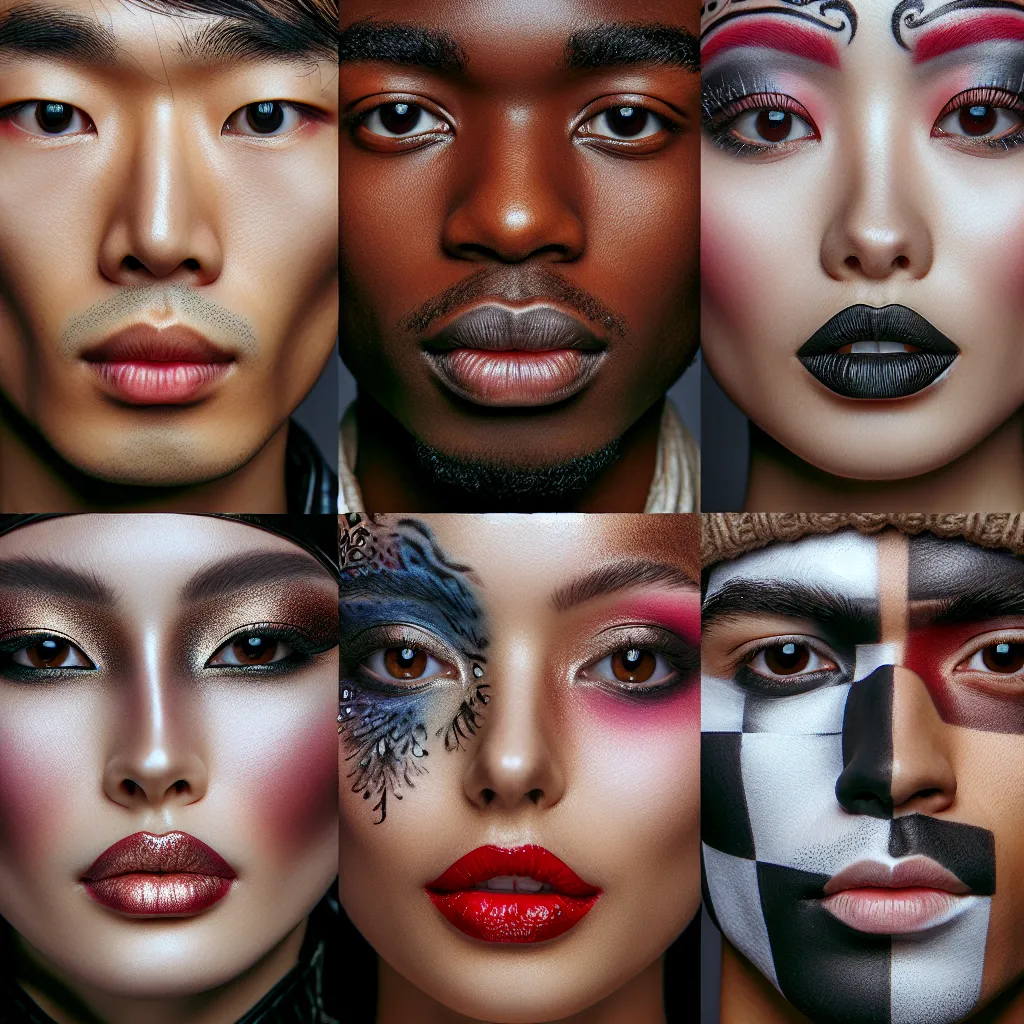The Evolution of Makeup Trends: From Ancient Civilizations to Modern Times
The evolution of makeup trends spans across centuries, from the ancient civilizations to the modern times. One significant aspect of modern makeup routines is the use of facial primers to achieve a flawless base. Facial primers have revolutionized the way makeup is applied, providing a smooth canvas for foundation and helping it last longer throughout the day.
Ancient Egyptians were among the first to use a form of primer, mixing substances like ground malachite with oils to create a base for their iconic eye makeup. In modern times, the use of facial primers has become an essential step in makeup application, with various formulations catering to different skin types and concerns.
If you’re interested in exploring a range of facial primers to find one that suits your skin best, you can check out this collection of facial primers. This link leads you to a selection of primers offered by Inglot Cosmetics that cater to diverse skin needs, providing a valuable resource in creating a flawless makeup base.
Whether you’re delving into the history of makeup or embracing the latest trends, the use of facial primers remains a significant aspect of the beauty world, bridging the gap between ancient traditions and modern cosmetic advancements.
The Evolution of Makeup Trends: From Ancient Civilizations to Modern Times
Makeup has been an integral part of human culture for centuries, with its trends evolving significantly from ancient civilizations to modern times. The history of makeup dates back to ancient Egypt, where both men and women used various cosmetics to enhance their features. Egyptians used kohl to outline their eyes, while reddish ointments were applied to their lips and cheeks. These practices highlighted the significance of makeup in accentuating facial features and expressing social status.
Similarly, ancient civilizations like Greece and Rome also embraced the use of makeup, employing natural ingredients like berries and wine to create lip color and cheek stains. The elaborate use of makeup was synonymous with beauty, and it also had ritualistic and religious connotations.
As centuries passed, the use of makeup continued to evolve. The Middle Ages saw a decline in the popularity of makeup, with paler skin and a more natural look becoming fashionable. However, the Renaissance period witnessed a revival of interest in cosmetics, with trends embracing a more vibrant and colorful approach.
Fast forward to the modern era, and makeup trends have become an essential part of self-expression and individuality. The 20th century marked a significant shift in makeup trends, with iconic figures like Coco Chanel and Marilyn Monroe influencing styles that emphasized a flawless complexion, dramatic eyes, and bold lips.
Today, the makeup industry continues to thrive, with social media and beauty influencers playing a pivotal role in shaping trends. From natural, minimalist looks to bold, avant-garde styles, makeup trends encompass a wide spectrum, allowing individuals to experiment and express themselves creatively.
Understanding the evolution of makeup trends provides insight into the ever-changing landscape of beauty standards and self-expression. As we look back on the journey of makeup through history, it becomes evident that the artistry of cosmetics will continue to captivate and inspire for generations to come.
The Art of Makeup: Techniques and Transformations
Makeup is much more than just a cosmetic product. It is an art form that allows for endless creative expression and transformation. The art of makeup encompasses a wide range of techniques, from subtle enhancements to dramatic, theatrical transformations. Professional makeup artists have the ability to completely alter a person’s appearance, creating different characters and personas through the skillful application of makeup.
Techniques such as contouring, highlighting, and blending are fundamental to the art of makeup. These techniques allow artists to sculpt and enhance facial features, creating dimension and symmetry. Additionally, professional makeup artists are adept at color theory and understanding how different shades and tones can be used to evoke specific moods and aesthetics.
Makeup is not only about enhancing natural beauty but also about pushing boundaries and challenging conventional standards of beauty. The transformative power of makeup allows individuals to explore and express different facets of their personality, experimenting with various looks and styles.
From editorial shoots to runway shows, the art of makeup plays a pivotal role in the world of fashion and beauty. It serves as a tool for storytelling and self-expression, enabling individuals to unleash their creativity and showcase their unique vision.
Ultimately, the art of makeup goes beyond surface-level beauty; it is a form of artistry that empowers individuals to embrace their individuality and explore the boundless possibilities of self-expression.
Exploring Cultural Significance: Makeup Rituals Around the World
In the world of makeup, cultural significance plays a significant role in shaping beauty rituals and trends. Exploring makeup rituals around the world unveils a rich tapestry of traditions, beliefs, and practices that have been passed down through generations. From the bold and vibrant kohl-lined eyes of Indian women to the delicate artistry of geisha makeup in Japan, each culture has its own unique approach to cosmetics, reflecting its history, values, and societal norms.
In many African cultures, makeup is used not only for beautification but also for ceremonial purposes. Intricate patterns and vibrant colors are employed to adorn the face and body during rituals and celebrations, symbolizing cultural identity and spiritual connections. In contrast, the minimalist beauty aesthetic embraced in Scandinavian countries emphasizes a natural, effortless look that celebrates individuality and inner beauty.
Furthermore, the significance of makeup in the Middle East is deeply rooted in tradition and symbolism. Symbolizing femininity and artistry, the use of kohl and henna holds a special place in various rituals and ceremonies, serving as a form of self-expression and cultural pride. These diverse approaches to makeup worldwide highlight the deep intertwining of beauty practices with cultural heritage and heritage traditions.
The Future of Makeup: Innovations and Sustainability
As we delve into the future of makeup, it’s impossible to ignore the continuous innovations and growing emphasis on sustainability within the cosmetics industry. Cutting-edge technologies and advancements in formulation have paved the way for a new era of makeup products that are not only high-performing but also environmentally friendly.
One of the most prominent trends in the future of makeup is the focus on sustainability. Beauty brands are increasingly prioritizing eco-friendly packaging, ethically sourced ingredients, and cruelty-free testing methods. With consumers becoming more conscious of their environmental impact, the demand for sustainable and clean beauty products continues to rise.
The integration of technology in makeup products is also shaping the future of beauty. From customizable foundation formulations to AI-powered skincare analysis, the beauty industry is leveraging technology to offer personalized and tailored experiences to consumers. The advent of virtual try-on tools has revolutionized the way people experience makeup, allowing for virtual testing and experimentation without physical product waste.
Furthermore, the future of makeup is witnessing a surge in inclusivity and diversity. Brands are expanding their shade ranges to cater to a broader spectrum of skin tones, reflecting the diverse beauty landscape. Additionally, the use of augmented reality technology is enabling virtual shade matching, ensuring that consumers can find their perfect match with ease.
In conclusion, the future of makeup is deeply intertwined with innovation and sustainability. As technology continues to advance, and consumer preferences evolve, the beauty industry will undoubtedly witness further transformative changes, leading to a more inclusive, sustainable, and technologically driven landscape.

